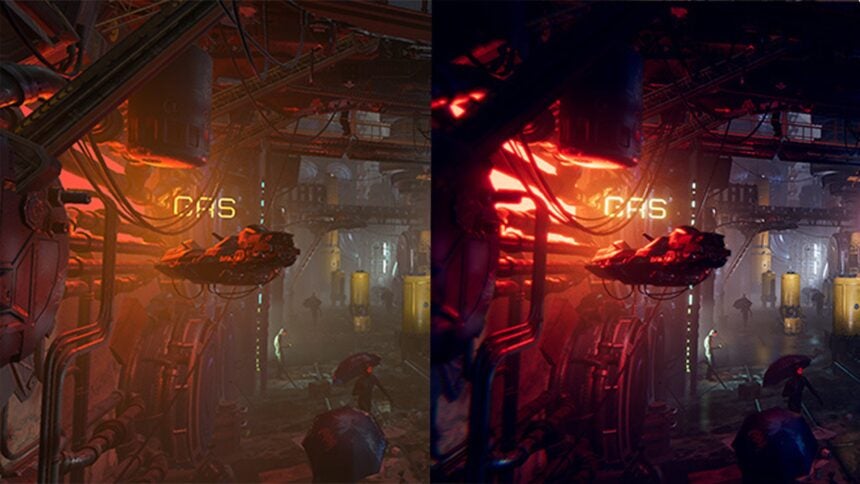The Meta Quest 3 will allow devs to create truly breathtaking visual experiences

In case you didn’t know: the Meta Quest 3 starts shipping today! It’s a truly feature-packed headset that is absolutely aiming to become one of the best VR headsets on the market. Well, if not today, then at least a year for now, when all of the promised features have actually been released.
Well, honestly, I don’t know what you’re expecting me to say: it’s a sequel to one of the best-selling VR headsets ever. Of course it’s better, both in terms of feature-set and raw power. So the question, rather, is: how much better is it?
Well, thanks to Qualcomm’s latest AR/VR-focused chip: the Snapdragon XR 2 Gen 2 — which is the heart of each Quest 3 unit — we can expect post-processing on the Quest 3 to be vastly superior. Or, in other words: graphics now better. Graphics good!

Not to say that the visual fidelity of the Ques 2 or even the Pico 4 is anything to scoff at: not at all! But the fact of the matter is that what the XR 2 Gen 2 offers in terms of post-processing — which is the part of rendering that makes things look extra nice — has basically not been seen before in a standalone headset.
Not only that, but this will also have an effect on the AR capabilities of the headset. Passthrough has improved a lot: that’s for sure, but the Quest 3 will also offer spatial features, which means that it can do stuff like the ones we saw on the Vision Pro reveal trailer.
Now, how much will that matter if the adoption rate of less-powerful headsets remains larger than that of the Quest 3? We can’t possibly say and the outlook may not be as good as initially thought, but hey: things change and the Quest 3 is a promising piece of hardware!
We’re sure that more graphical showcases will become available as time goes on, but for now, you can check this graphical comparison between the Quest 2 and Quest 3, running Red Matter 2: one of the most graphically intense VR games on the market.
And after you’re done being impressed with that, remember that it should absolutely improve over time too.
Well, thanks to Qualcomm’s latest AR/VR-focused chip: the Snapdragon XR 2 Gen 2 — which is the heart of each Quest 3 unit — we can expect post-processing on the Quest 3 to be vastly superior. Or, in other words: graphics now better. Graphics good!

Not to say that the visual fidelity of the Ques 2 or even the Pico 4 is anything to scoff at: not at all! But the fact of the matter is that what the XR 2 Gen 2 offers in terms of post-processing — which is the part of rendering that makes things look extra nice — has basically not been seen before in a standalone headset.
Not only that, but this will also have an effect on the AR capabilities of the headset. Passthrough has improved a lot: that’s for sure, but the Quest 3 will also offer spatial features, which means that it can do stuff like the ones we saw on the Vision Pro reveal trailer.
We’re sure that more graphical showcases will become available as time goes on, but for now, you can check this graphical comparison between the Quest 2 and Quest 3, running Red Matter 2: one of the most graphically intense VR games on the market.
And after you’re done being impressed with that, remember that it should absolutely improve over time too.
Follow us on Google News














Things that are NOT allowed:
To help keep our community safe and free from spam, we apply temporary limits to newly created accounts: